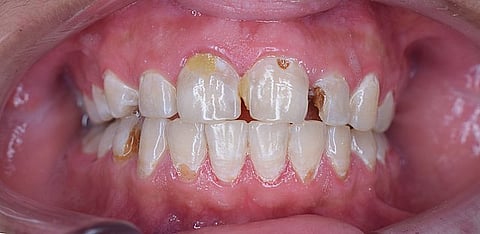What are the complications of Dental caries?
● Dental caries, if left untreated for a prolonged time, can lead to abscess formation which is a form of swelling associated with infection and the patient might present with a fever over some time.
● If the cavity affects a greater structure of the tooth, it may lead to the loss of the tooth structure and the teeth might become loose and eventually fall off.
● The root cause of cavity formation is the bacterial biofilm. This biofilm or the colony of bacteria if left untreated can lead to bleeding or swollen gums over time. ● The gum disease can further progress to the tissues that hold the tooth attached to the socket and affect them leading to infection in the area around the tooth.
Treatment of Dental Caries
The management of dental caries depends on how severe it is and how much of the tooth structure has been involved. The treatment is along the following lines:
● If the carious lesion is in the initial stage where the lost minerals of the tooth can be regained back, preventive treatment like application of fluoride gels or varnishes or pit and fissure sealants might be of great help as these materials seal the small pits on the tooth surface which are the most vulnerable sites for bacterial action and hence prevent the progression of caries.
● If the cavity is such that the patient does not present with any symptoms of severe pain, the dentist might just remove the caries with an instrument similar to a drilling machine and fill it with a suitable restorative material. There are a variety of restorative materials available, some of them have a colour similar to the colour of the tooth which are known as composites advised mainly in patients with an esthetic concern. Also, there is Silver amalgam, which is used often as a restorative material in areas where esthetics is not a major concern.


